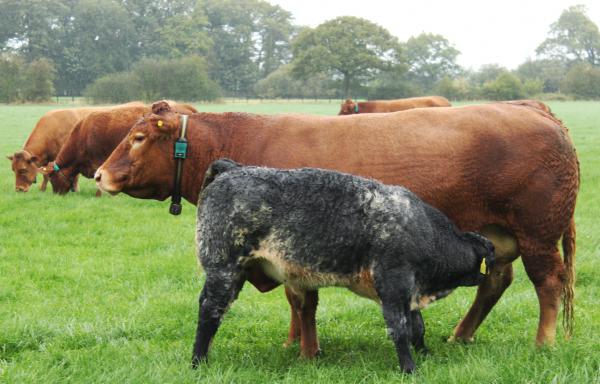The success of any AI programme relies on good heat detection. While AI has many advantages, it comes at a cost. When using a stock bull to breed cows, the bull will do the heat detecting for you and will serve cows at the optimum time of standing heat.
When you go down the AI route, the farmer is responsible for heat detection and ensuring cows are inseminated at the right time.
Picking up cows in heat is much easier during the winter period, as animals are housed compared with spring-calving cows coming in heat while at grass.
With cows housed, they are easier to observe for bulling activity and much easier to isolate for inseminating.
Another advantage with winter AI is that cows are on a controlled, steady diet which can help to increase conception rates.
While winter housing does lend itself to using more AI compared to breeding cows that are grazing, it does not mean you will automatically have higher conceptions.
Herd management, cow fertility, cow diet and health will still influence conception rates. Following these simple steps can help you to improve the number of cows you pick up in heat this winter, helping to get more cows bred at the ideal time and improving conception rates.
1 Increase time spent observing cows: Like anything, the more you put into it, the more you will get out of it. You should be observing cows for a minimum of 20 minutes each time you observe them and at least three times per day.
The reason being there will always be cows in heat showing strong mounting activity. But equally there will be cows in the same group that are in heat and showing very little signs, such as mounting other animals.
Therefore, the longer you spend watching cows, the more chance you have of picking up cows showing weak heat activity.
Also, cows that are housed on slats can often express shorter standing heats of one to two hours. This makes it harder to observe these animals, especially if you are working off farm, or only in the shed morning and night to push in silage or offer meals.
The same animals will have much stronger heats if housed on solid floors or bedded floors. If you are only observing cows morning and night, you should be spending a longer time on each monitoring period. Ideally, spending 30 minutes heat detecting will be of benefit.
2 When to observe: Morning and evening are the most obvious time for heat detection as they tie in with insemination times to suit the am:pm rule (a cow in heat in the morning should be inseminated at night).
Morning and evening times also fit in with feeding time. But it is worthwhile spending a period of time in the afternoon, or late at night if you work off-farm, as cows will have settled after their normal feeding routine when fresh silage or meal is offered.
These animals are more likely to show signs of heat in their normal behaviour during these periods. Similarly, if you are monitoring cows in the morning or evening time, do not automatically start pushing in feed as soon as you enter the house.
This will disturb cows from their natural behaviour and make it harder to pick up the cows with short standing heats.
3 Use heat detection aids: There are several aids for heat detection and they range in price and practicality. Their usefulness depends on how often you are checking cows and how difficult it is to pick up cows in heat.
For instance, if you are checking cows three to four times per day, then some aids will offer little benefit. Likewise, if cows are showing strong mounting activity in the shed, then some detection aids will offer little advantage.
Using aids for heat detection work best when time is limited on farm through off-farm employment, multiple enterprises or multiple stock groups. They will also work well in animals showing weaker heats. You still need to be monitoring animals at least twice daily to identify animals that have shown standing heat, otherwise you will miss the optimum time for serving cows.
4 Restrict suckling: Restricting the suckling activity of calves to twice daily can help to bring cows back into heat much quicker after calving, compared with letting the calf suckle it’s dam freely.
Herd owners who do restrict the suckling activity of the calf have also found that cows express much stronger heats.
Calves should be restricted to suckling to morning and evening from around 20 days after calving. Winter housing makes this option much more practical as calves will generally have access to creep areas where they can be locked away from the cow during the day time.
5 Record heat and insemination date: Record the dates of all heats and inseminations, that way it will be easier to monitor cows for signs of repeating if they do not hold to service. Keep a close eye from around day 17 after inseminating the cow for signs of repeating.






 This is a subscriber-only article
This is a subscriber-only article










SHARING OPTIONS: